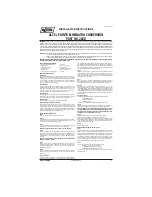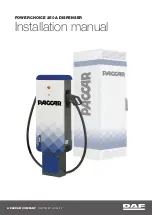
judgement when determining proper inflation. Tires
may look properly inflated even when they are under-
inflated.
•
Inspect tires for signs of tire wear or visible damage.
CAUTION!
After inspecting or adjusting the tire pressure, al-
ways reinstall the valve stem cap. This will prevent
moisture and dirt from entering the valve stem,
which could damage the valve stem.
Inflation pressures specified on the placard are always
“cold tire inflation pressure”. Cold tire inflation pressure
is defined as the tire pressure after the vehicle has not
been driven for at least three hours, or driven less than 1
mile (1.6 km) after a three hour period. The cold tire
inflation pressure must not exceed the maximum infla-
tion pressure molded into the tire sidewall.
Check tire pressures more often if subject to a wide range
of outdoor temperatures, as tire pressures vary with
temperature changes.
Tire pressures change by approximately 1 psi (7 kPa) per
12°F (7°C) of air temperature change. Keep this in mind
when checking tire pressure inside a garage, especially in
the winter.
Example: If garage temperature = 68°F (20°C) and the
outside temperature = 32°F (0°C) then the cold tire
inflation pressure should be increased by 3 psi (21 kPa),
which equals 1 psi (7 kPa) for every 12°F (7°C) for this
outside temperature condition.
Tire pressure may increase from 2 to 6 psi (13 to 40 kPa)
during operation. DO NOT reduce this normal pressure
build up or your tire pressure will be too low.
5
STARTING AND OPERATING
455
Summary of Contents for CHALLENGER SRT 2014
Page 1: ...Charger SRT O W N E R S M A N U A L 2 0 1 4...
Page 4: ......
Page 7: ...1 INTRODUCTION 5...
Page 10: ......
Page 108: ......
Page 152: ...Voice Tree 150 UNDERSTANDING THE FEATURES OF YOUR VEHICLE...
Page 186: ...Voice Tree 184 UNDERSTANDING THE FEATURES OF YOUR VEHICLE...
Page 188: ...186 UNDERSTANDING THE FEATURES OF YOUR VEHICLE...
Page 190: ...188 UNDERSTANDING THE FEATURES OF YOUR VEHICLE...
Page 196: ...Voice Tree 194 UNDERSTANDING THE FEATURES OF YOUR VEHICLE...
Page 198: ...196 UNDERSTANDING THE FEATURES OF YOUR VEHICLE...
Page 200: ...198 UNDERSTANDING THE FEATURES OF YOUR VEHICLE...
Page 202: ...200 UNDERSTANDING THE FEATURES OF YOUR VEHICLE...
Page 204: ...202 UNDERSTANDING THE FEATURES OF YOUR VEHICLE...
Page 314: ......
Page 318: ...INSTRUMENT CLUSTER 316 UNDERSTANDING YOUR INSTRUMENT PANEL...
Page 454: ...452 STARTING AND OPERATING...
Page 568: ......
Page 597: ...INDEX 10...
















































